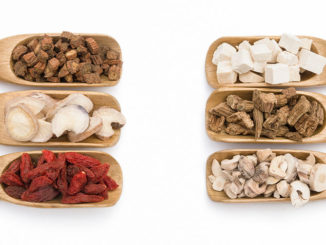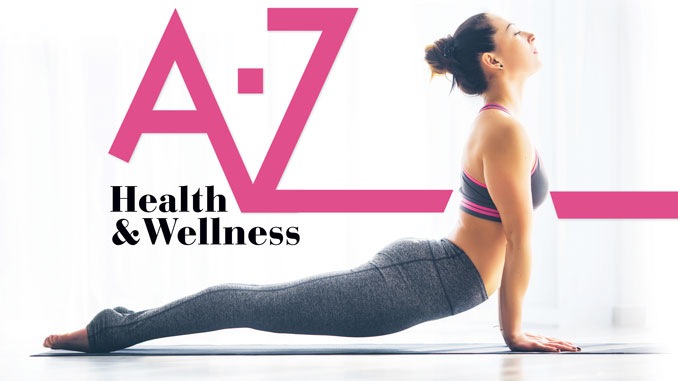
A healthier you in 2018.
I’m gonna teach you (teach you, teach you), all about generalized health topics.
A-B-C, it’s as easy as 1-2-3. Just kidding, it takes time and effort. And the known lack of instant gratification is enough to lead others astray—but not you! Because you put in work to make your health, mind, and body work for you. Go, you!
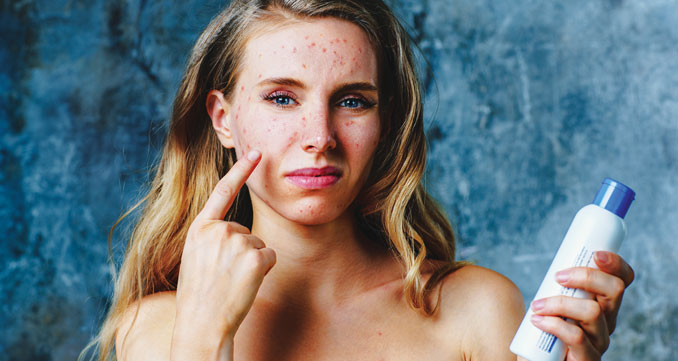 Adult Acne
Adult Acne
Think you’re in the clear (no pun intended) once you get out of your teens? Think again. In the past decade, the common age of acne sufferers has increased from 20.5 years old to 27, and clinical studies report that nearly 55 percent of the adult population from age 20-40 are diagnosed with mild to moderate, persistent acne. So, although all your friends seem to have perfect, flawless skin—know that you are not alone.
Because acne is triggered by hormones, these pesky, often depressing and anxiety-triggering blemishes can make an appearance at any time in life. However, adult acne is typically more difficult to treat and control than teen acne. Common causes for adults include fluctuating hormone levels, genetics, diet choices, hair and skin care product choices, medication side effects, and continual stress.
Work your way through this list: Get hormone panel testing, consider birth control to regulate your hormones, a steroid or pharmaceutical grade topical, fill your dermatologist in on family history and current medications, eat more greens and less grease, and try out a few new beauty and hygiene products for sensitive skin. And then, you may not need to tackle the ‘continual stress’ aspect, because as we all know—breakouts cause more stress, which results in excess activity of the sebaceous glands, which causes more acne—dang, it’s a vicious cycle.
Breathing Techniques
Speaking of continual stress, it’s a real doozy. American’s levels are literally off the statistical charts when compared to past decades and generations. Scroll to letter ‘S’ for a by-the-numbers look at stress in America today. So, how do we deal? We breathe!
Common breathing exercises focus on deep breaths. It’s a simple practice, and you can do it anywhere! Sit up straight, put one hand on your chest and another on your stomach. Breathe in fully and slowly through your nose, hold that breath in for a few seconds, and exhale through your mouth. Ensure that each inhale through your nose fills your lungs fully—and that each exhale releases as much air as you can. Your hand placement will help with proper technique. If the hand on your stomach moves as you exhale you’re in business, because this signifies deep, lung-cavity-filling breaths.
Celiac Disease
“I’m gluten-free!” Are you sick of hearing that, yet? Regardless of trends, Celiac Disease is no joke. Harvard Health Publishing explains that the disease attacks the lining of the small intestine when gluten is consumed and damages the nutrient-absorbing fingerlike projections, called villi, on the intestinal wall—resulting in gas, bloating, diarrhea, constipation, joint pain, headaches, and fatigue and, more seriously, malnutrition. Luckily, Celiac Disease can be identified through a blood test and biopsy snipped from the intestinal wall.
DHEA
A naturally occurring hormone, dehydroepiandrosterone (DHEA) is produced by both your ovaries and adrenal glands. And, has recently created buzz as a precursor to hormone therapy, as it helps produce and stabilize other hormones including testosterone and estrogen. Synthetic versions of DHEA are available to take as an OTC supplement, and reaps additional benefits!
The Mayo Clinic reports that studies suggest DHEA is an amazing anti-aging tool; and that it slows the aging process, increases bone mineral density, decreases body fat, improves sexual function and vaginal dryness, boosts cognitive function and body composition and can treat mild depression.
Estrogen
Sure, we’ve all heard about this hormone, but do we understand it? The term estrogen is commonly used to refer to three major endogenous estrogens—estrone; a weak estrogen that is a steroid and minor female sex hormone, estradiol; a hormone that can be used to treat symptoms of menopause, to support post hysterectomy, or treat prostate and breast cancer, and estriol another weak estrogen with powerful play—as it can benefit bone density, heart health, and is a major player in bioidentical hormone-replacement treatment.
So, what does this mean for us? If you begin to experience painful sex due to lack of natural lubrication or increased urinary tract infections, head to your doctor for a hormone panel. Low estrogen levels can lead to vaginal atrophy—a thinning and shrinking of the tissues that results in inflammation.
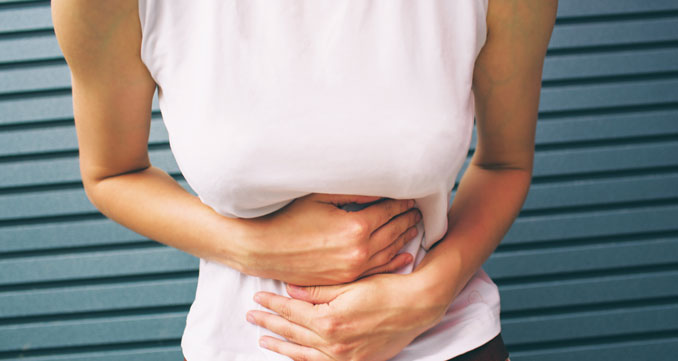 Fibromyalgia
Fibromyalgia
This common, chronic pain disorder is a hard egg to crack. It’s complex, causing fatigue, sharp soft-tissue pain (that ranges in severity) and tenderness throughout the body that comes in waves—lasting for hours or weeks. The National Fibromyalgia & Chronic Pain Association report that 10 million Americans live with this disorder. And at a staggering 8 to 2, Fibromyalgia (FM) affects women over men.
Though there is no cure, active treatment makes life for the affected much more manageable and enjoyable. If you feel you are suffering, don’t stay in the dark. Work with doctors until a diagnosis is reached, and then take healthy steps to live a happy life.
Gastrointestinal tract
Your gut is your second brain—no, really! There is biochemical signaling that takes place between the gastrointestinal tract (GI tract) and the central nervous system. So, it doesn’t seem too far off to treat your belly right in hopes of ultimate body function.
Eat fresh foods, only eat out once or twice a week, eat small meals, eat often, try greens, kick grease to the side, cut down on dairy, give meatless Mondays a go…the list goes on.
There are so many ways to treat yourself right in the realm of GI health, and if you’re suffering from Irritable Bowel Syndrome (IBS)-like symptoms—start here, and improve your quality of life!
Hashimoto’s Thyroiditis
American Thyroid Association explains that Hashimoto’s is the most common cause of hypothyroidism in the United States, affecting 5 out of 100 people nationally. Seen most commonly in middle-aged women (as it’s 8 times more common in women than men), the autoimmune disorder occurs when your immune system attacks your thyroid.
This disorder can often come without symptoms, so take a look at your family history, as genes play a big role. The Mayo Clinic reports that researchers aren’t sure where the disorder comes from, but believe it to be a combination of genes and an outside trigger, like a virus.
Pay attention to what history and your body tells you, and go to the doctor if you experience weight gain, tiredness, trouble tolerating the cold, dry thinning hair, and heavy or irregular periods.
Internet Addiction
Guess what? Social Media is probably making you depressed, and hours on your smartphone every night is likely fueling your insomnia. If you spend a few hours online reading and learning, skip this letter. But if your days and nights are full of scrolling, take a seat.
Recently, there has been a plethora of case-control studies that report on the connection between smart-phone/internet addiction (which has now earned its official disorder title—IAD, or Internet addiction disorder) and depression, social anxiety, self-esteem issues, and sleep quality. It’s no secret that the virtual world can sometimes be more attractive than everyday life (it’s not real), so it’s really no surprise. The cure? Put your phone down, go outside, and be present in the moment.
Joint pain
“My knee!” No, I’m not 75 years old; I’m your average woman in her early 30’s who experiences joint pain, and I’m not alone. Joints are the parts of your body where your bones meet, allowing for movement—like in your shoulders, wrists, hips, elbows, and knees. The pain’s trigger is where treatment and prevention gets tricky. Arthritis is the most common cause of joint pain, with osteoarthritis being most common in adults over 40. However, autoimmune disorders can also be a culprit, as well as injury and strain.
If you’re concerned about arthritis, its early onset, or are experiencing intense joint pain, a blood test and a joint x-ray can be performed by a doctor to pinpoint your reason for pain, and the test treatment.
Ketosis
Surprise! The key to your weight loss is ketosis! National Center for Biotechnology Information says the hunger-reduction report during ketogenic diets is well-known, though the underlying molecular and cellular mechanisms remain uncertain.
When your body is in ketosis, your blood sugar levels drop and your body begins to break down fat to use as energy, because in normal circumstances, your body uses glucose—derived from carbohydrates like sugars, fruits, milk and yogurt, and bread and pasta— as its primary source of energy. And if you don’t have ample amounts, your body will catapult into an extreme fat-burning state, reducing hunger, stabilizing blood sugar, and burning fat.
If there is not enough glucose available to meet energy demands, the body will adopt an alternative strategy to meet those needs. Specifically, the body begins to break down fat stores to provide glucose from triglycerides.
Leafy Greens
Are your meals colorful? If not, chances are you’re lacking a vital part of your everyday diet, and more importantly, nutrients. Leafy greens are nutrient-dense powerhouses that reduce the risk of some seriously population-plaguing issues like cancer and heart disease—as they are packed with antioxidants, phytochemicals, fiber, folic acid, vitamins, minerals, and protein (YES, with all crazy vegans aside, science supports that greens have protein). In fact, protein accounts for 30% of the calories in spinach, a common leafy green. Others include kale, collard greens, broccoli, bok choy, and red and green leaf romaine lettuce.
Want to lose weight? Leafy greens play a big role here, as the antioxidants they provide can play a critical part in weight loss, and they’re low fat all on their own. Can’t stomach the taste? Replace a meal with a smoothie that contains 2 cups of spinach, 1 collard green leaf, 2 cups of frozen fruit, 2 bananas, and 2 cups of water or milk. Your excuse is obsolete, friend because this recipe is delicious (and for all the other reasons I just mentioned above).
 Menopause
Menopause
Hot flashes, irritability, and depression—oh my! We all know what menopause is, but do we know how to make this un-ignorable part of our life work best for us? Hormone therapy (HT), AKA Hormone Replacement Therapy, is all the buzz as technology takes us further in the medical field, with avid supporters and others who voice concerns.
However, The North American Menopause Society’s 2017 report states that HT remains the most effective treatment for vasomotor symptoms and the genitourinary syndrome of menopause. In layman’s terms, they kick your hot flashes, night sweats and flushes in the rear, as well as any dryness, burning, irritation, or sexual and urinary symptoms associated with menopause. The report also states that HT has been shown to prevent bone loss and fractures.
However, there are risks. The report states that the benefit-risk ratio is less favorable for those over 60, or those who take HT 10 to 20 years prior to onset of menopause symptoms.
Nut Cheese
Thought you could never put down that block of cheese? Grab a bag of raw cashews next time you’re at the grocery, and consider kicking dairy’s many scary afflictions.
When dairy is removed from your diet, you are likely to experience weight loss, clearer skin, and increased energy. In fact, The BMJ (formerly the British Medical Journal) reports that milk is deleterious to health, and that a high intake of milk might have undesirable effects, because milk is the main dietary source of D-galactose.
Soak your two cups of raw cashews in salted water for at least two hours, strain and then pop them into the food processor with whatever flavors you’d like (garlic, herbs, seasonings, etc.) and then you’ll have… liquid gold!
Oil of Oregano
Fighting a virus, fungus, or bacteria (YUM)? Oil of Oregano—the oil extracted from everyone’s favorite Italian cooking herb—is a potent antimicrobial, antibiotic, antifungal, and antiviral. So strong, in fact, that the oil can inhibit the growth of clinical strains of E. coli and sterilize septic water. Medical and scientific studies support these claims and even suggest its daily consumption to control or prevent candidiasis.
Fight colds, flus, and bacteria with the liquid tincture commonly found in health food and grocery stores. IT. IS. POTENT. Drop only four drops into a full glass of orange juice and drink twice daily, or, every three hours if you’re fighting a cold or flu.
Psyllium Husk
Add healthy, soluble fiber to your diet with this bulk-forming plant that soaks up water in your gut. Combating high blood sugar, blood pressure, and cholesterol, supporting weight loss and aiding in constipation and diarrhea—Psyllium can be purchased in pill or powder form, and taken daily.
This bad boy is perfect for gluten free baking! Just like xanthan gum, it boasts elasticity, binding powers, and structure for baked goods.
Quercetin
As a natural flavonoid (biologically active, water-soluble plant compounds that occurs in fruits, vegetables, and herbs)‚ our letter Q has several potential health benefits. Quercetin isn’t produced by the human body‚ so you must seek out foods that include it—like grapes, citrus fruits, peppers, and dill—or supplement.
Flavonoids are plant pigments responsible for providing color to many fruits and vegetables‚ including grapes‚ apples‚ onions‚ green tea‚ and some berries. Quercetin is one of the most bioactive flavonoids‚ meaning the chances you won’t see its powerful influence when making a point to include it in your diet/vitamin regimen are slim.
From relieving mild allergic symptoms as it decreases the release of histamine, to providing antioxidant properties through the stabilization of free radicals, and supporting breast, prostate and colon cell health—quercetin protects your body, and DNA!
Relaxation
‘Honey, it’s for my health!’ Is what you can tell your husband after you book out monthly massages for the next six months—because, it really is! As you’ll learn just one letter below, stress is a killer and to combat it, we must relax! Take a few moments for yourself each day to breathe, and set aside some time monthly to really let go. You can relax via pamperings, or through exercise, reading, or whatever it is that gets you in the (other) mood!
Stress
More people are more stressed than ever before. In fact, 1 in 5 people experience ‘extreme stress’, that involves shaking, heart palpitations, and depression, according to The American Institute of Stress. The institute also reports that a staggering 60% of all human illness and disease is a result of stress-related ailments—with those suffering from stress seeing a 40% increased risk of heart disease, 25% risk of heart attack, and 50% risk of stroke!
Causes? Let’s see… the American dream? The job you hate? Relationship problems, divorce, life tragedies? With such opportunity for stress, it’s important to be your own advocate and manage it. Control your mind or it will control you. Look to letter “B” for breathing exercises sure to ease your stress and anxiety.
Text Neck
No, this isn’t a joke. Today, we’re on our phones so much that a modern spine ailment has surfaced with an equally hilarious term and ‘buzzword’—Text Neck Syndrome. If you’re constantly on your phone or tablet, chances are you’re looking down causing strain on your neck that can result in upper back pain, shoulder pain, and possibly cervical nerve damage. Those who spend excessive amounts of time looking down throughout the day could even risk early onset arthritis in the neck. Prevention and treatment is simple, Step. Away. From. The. Phone.
Urinary Urgency
Can you make it through a short road trip without a rest stop? I can’t. But I also drink massive amounts of water and have a high metabolism. Still, I wondered if everything was okay when I noticed I head to the girls’ room more often than most. Cleveland Clinic reports that the average person should urinate 6 to 8 times in a 24-hour period, but up to 10 times is not abnormal. For those of us that can’t make it through a movie, let’s keep reading.
Frequent urination isn’t an issue until it reaches overactive bladder status. If you have the urge, and frequently, but also need to get up at least two time throughout the night, and experience urge incontinence (leakage when you get the urge) it’s time to head to the doctor!
Varicose Veins
No need to explain, we all know what these annoying and often insecurity-inducing buggers are. So, how do we get rid of them? Cutting edge, noninvasive surgeries are aplenty nowadays, that vary based on the severity of your veins. From injections, to lasers, and even ambulatory phlebectomy (a procedure that uses tiny punctures in the skin to remove superficial veins from tissue just under the skin) used to treat larger veins—there is an outpatient procedure that can make you feel good about your legs again! And don’t forget, always wear your medical compression hose throughout treatment to maximize outcome.
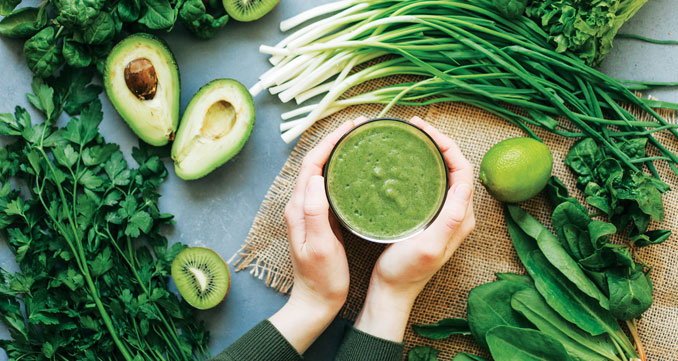 Weight Loss
Weight Loss
I haven’t met many women that would answer ‘no’ when asked if they could magically remove 10 pounds from their body. Thing is, that magic genie hasn’t been created yet. So, we’re left dieting and working out. Good news—both of these hobbies not only help you reach your goal, but enrich your life and mood, as fueling with fresh foods and getting in tune with your body is a real game changer.
We all know it’s not easy. Let’s chat first steps—portion control. This factor is key! Have you ever heard the saying, ‘You can eat anything you want, just not a lot of it’? It’s true, in a sense. And restaurants are no help, serving portions two times the international average. What does this mean for you? Eat out less, and never clean your plate! And at home, create small portions the size of your fist. Never overindulge as it stretches your stomach and creates more overeating. Removing that vicious cycle from your life will reflect in your body and energy levels!
Xylitol
If you read food labels (go you!), chances are you’ve come across the ingredient xylitol. A great rule of thumb when considering ingredients is—if you can’t pronounce it, don’t consume it. That’ll clear up time spent Google-ing terms in the aisle.
Ouch! There goes half of your processed panty, because, many of those ingredients can wreak havoc on both your body and mind, and this ingredient—dubbed by manufactures as ‘all natural’—is one of them.
Considered a crystalline alcohol, xylitol is a derivative of xylose—a crystalline aldose sugar that is not digestible. Xylose is naturally found and commonly obtained from birch bark. Yet, just because something is “natural,” doesn’t mean that it’s good for you. Studies dating back to the 1950s report that single-stomach animals are unable to properly metabolize xylose. People who eat foods with xylose tend to experience digestive issues like gas, bloating, and diarrhea.
 You
You
You deserve love. You deserve happiness. You are happy, beautiful, healthy and energized. You get through your day with ease. You experience abundance and love. You are loved.
Y is set aside for You, because you’re worth it. Read the above out loud and replace ‘you’ with ‘I’. Congratulations! You have just completed your first set of daily affirmations. Tell yourself every morning how amazing you are, how incredible your day will be. Affirmations and positive thoughts and visualizations are powerful. There’s reason why ‘your thinking makes it so’ and ‘your thoughts create your destiny’-esque sayings continue to stand the tests of time.
Zinc deficiency
An essential nutrient for humans, Zinc plays a vital role in your body’s proper biological function, and cell growth and division. Deficiency is common in the United States, and across the globe, causing issues like anemia, poor wound healing, stunted growth, dermatitis, impaired immune function, and many other bodily miscommunications.
The Center for Disease Control reports that the recommended daily allotment (RDA) for zinc is 11 mg/day in men and 8 mg/day in women. Higher RDAs are recommended for women during pregnancy and lactation (12 mg/day for pregnant women and nursing women).



